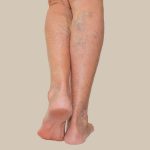 The formation or presence of a thrombus (clot).
The formation or presence of a thrombus (clot).
The formation or presence of a blood clot inside a blood vessel.
A clot in a blood vessel.
Formation of blood clots in blood vessels.
The intravascular (i.e., inside of blood vessel) formation of a blood clot.
Formation, presence, or development of a thrombus—blood clot.
A blood clot that becomes trapped in an artery or vein causing an occlusion.
The blocking of an artery or vein by a mass of coagulated blood.
Obstruction of a blood vessel by a blood clot.
A type of blood disorder involving excess clotting.
Condition in which a blood clot (thrombus) forms within a blood vessel. Thrombosis in an artery supplying the brain results in a stroke (cerebrovascular accident); in an artery supplying the heart, in a myocardial infarction; in a vein, thrombophlebitis. A thrombus may also move from its site of origin.
The formation or presence of a blood clot inside a cavity of the heart or a blood vessel.
A condition in which the blood changes from a liquid to a solid state and produces a blood clot (thrombus). Thrombosis may occur within a blood vessel in diseased states. Thrombosis in an artery obstructs the blood flow to the tissue it supplies: obstruction of an artery to the brain is one of the causes of a stroke and thrombosis in an artery supplying the heart (coronary thrombosis) results in a heart attack. Thrombosis can also occur in a vein, and it may be associated with inflammation. The thrombus may become detached from its site of formation and carried in the blood to lodge in another pan.
The formation of a blood clot within the vessels or heart during life. The process of clotting within the body depends upon the same factors as that of clotting of blood outside the body, involving the fibrinogen and calcium salts circulating in the blood, as well as blood platelets. The indirect cause of thrombosis is usually some damage to the smooth lining of the blood vessels brought about by inflammation, or the result of atheroma, a chronic disease of the vessel walls. The blood is also specially prone to clot in certain general conditions such as anaemia, the ill-health of wasting diseases like cancer, and in consequence of the poor circulation of old age as well as periods of immobility, such as during prolonged travel and also in pregnancy. Thrombosis may occur in the vessels of the brain and thus causes stroke in people whose arteries are much diseased.
The formation or presence of a blood clot within the vascular system. This is a life-saving process when it occurs during hemorrhage. It is a life threatening event when it occurs at any other time because the clot can occlude a vessel and stop the blood supply to an organ or a part. The thrombus, if detached, can travel through the bloodstream and occlude a vessel at a distance from the original site; for example, a clot in the leg may break off and cause a pulmonary embolus.
The formation or presence of a blood clot (thrombus) in a blood vessel or in the heart.
The process of clot formation within the blood, which can fully or partially obstruct a blood vessel. The presence of a thrombus may result in tissue infarction or the death of tissue due to the impaired blood supply caused by the blockage.
The development of a thrombus, or blood clot, in a blood vessel that is not damaged is unusual. While clotting is a standard reaction to an injured vessel wall, it becomes abnormal when the blood vessel is intact and not punctured.
The typical cause of a myocardial infarction, or heart attack, is a blood clot that develops in an artery feeding the heart muscle, known as coronary thrombosis. Similarly, a clot in a brain artery, referred to as cerebral thrombosis, is a frequent cause of stroke.
Blood clots can obstruct the arteries that deliver blood to various organs such as the legs, kidneys, retinas, and intestines, potentially causing significant damage. This may result in symptoms like pain and loss of function. Another risk is that a fragment of the clot, known as an embolus, could dislodge and travel through the bloodstream to block a crucial artery in a different region.
Blood clots can develop in veins as well, occurring either just under the skin or in more deep-seated veins.
In the bloodstream, there exists a delicate equilibrium between the processes that promote and inhibit clotting, ensuring neither excessive bleeding nor clot formation. If this balance is disrupted in favor of clotting, thrombosis can occur.
In arteries, the likelihood of blood clot formation is increased by factors such as atherosclerosis, which involves the accumulation of fatty deposits on arterial walls, as well as smoking, high blood pressure, and inflammation-related damage to the blood vessel walls in conditions like arteritis and phlebitis. The propensity for clotting can also rise during pregnancy, with the use of birth control pills, or due to extended periods of inactivity.
An arterial blood clot may not produce any symptoms until it starts to obstruct blood flow. When that happens, the tissue served by the blocked artery may function less effectively, and intense pain can sometimes occur. In the case of venous blood clots, symptoms may include pain and swelling.
Thrombosis is typically diagnosed using Doppler ultrasound, although angiography or venography might also be employed in certain instances. Treatment options often consist of anticoagulant or thrombolytic medications, nonsteroidal anti-inflammatory drugs, and occasionally antibiotics. For severe, life-threatening situations, surgical removal of the clot, known as thrombectomy, may be required.
The process of forming a blood clot or thrombus.
